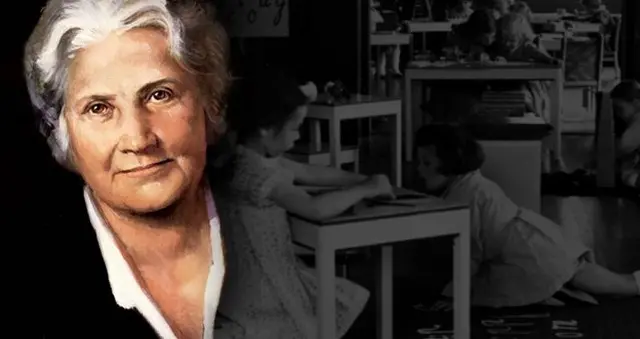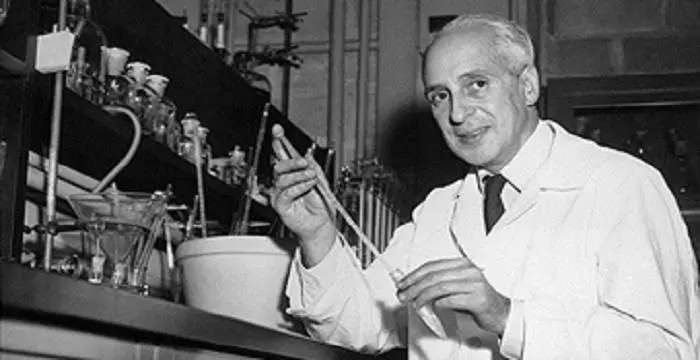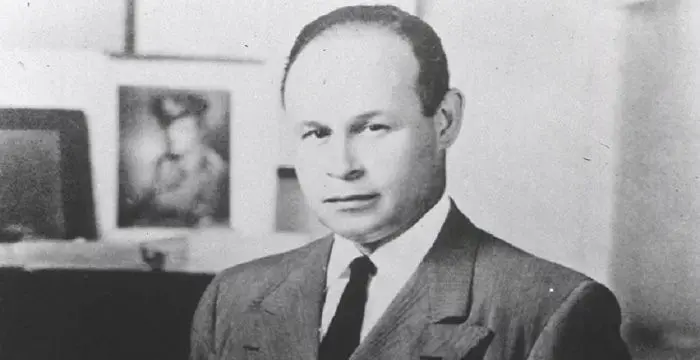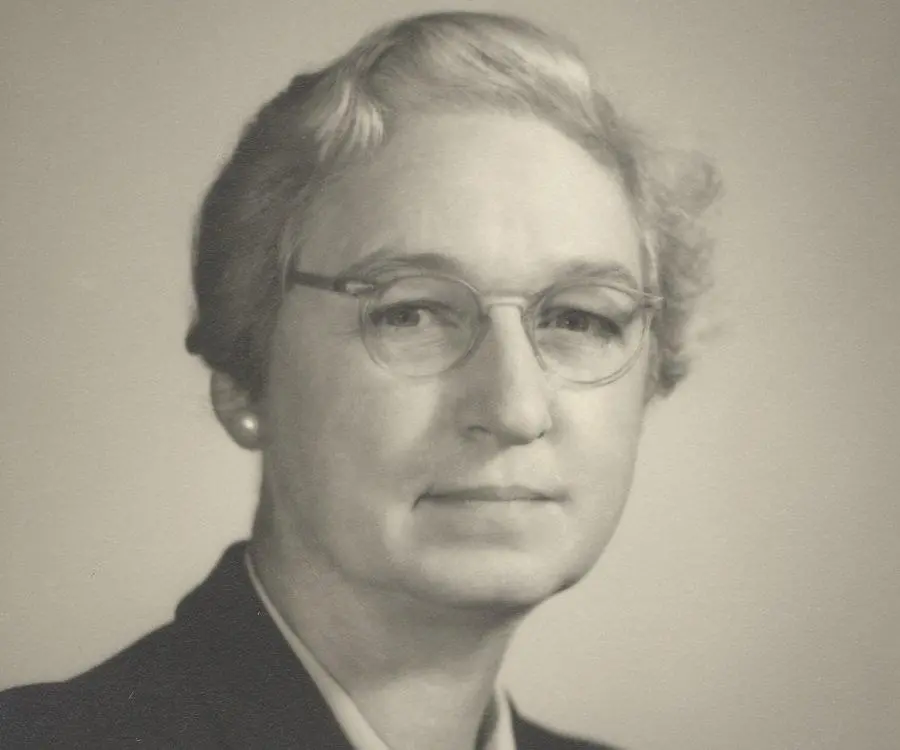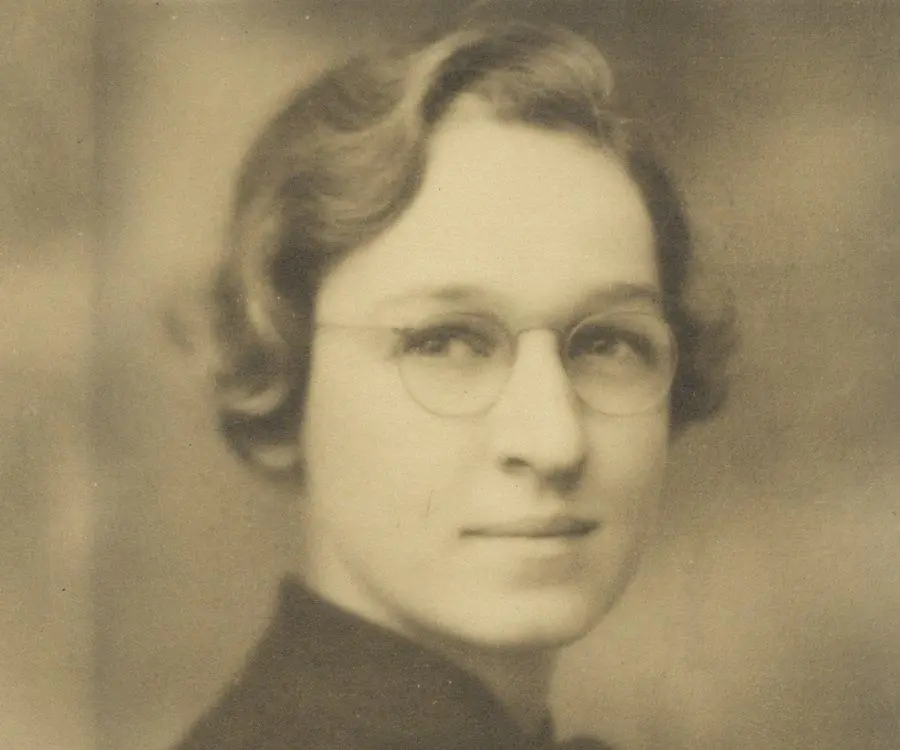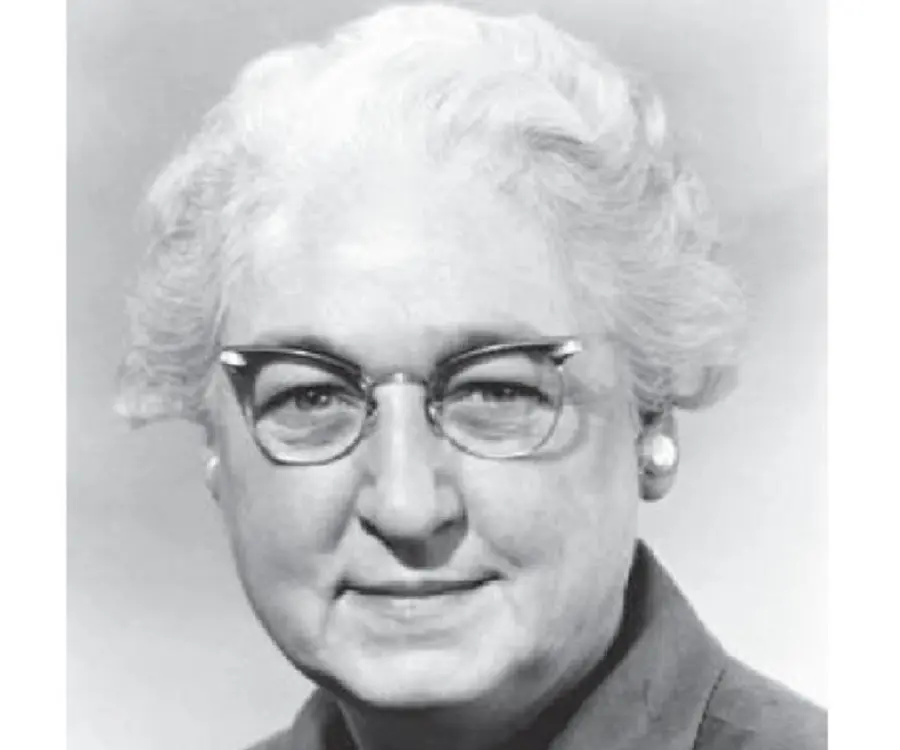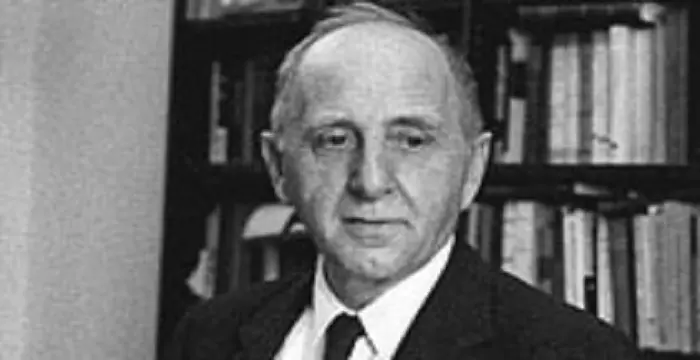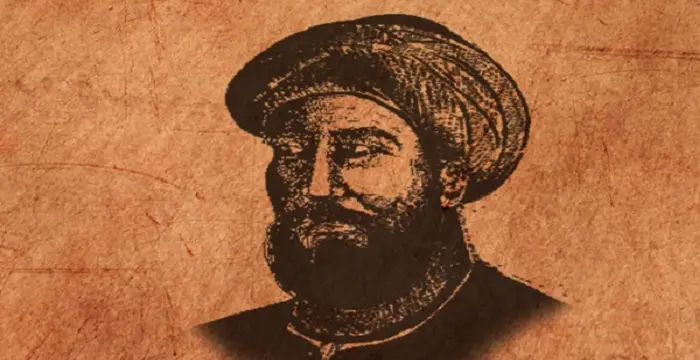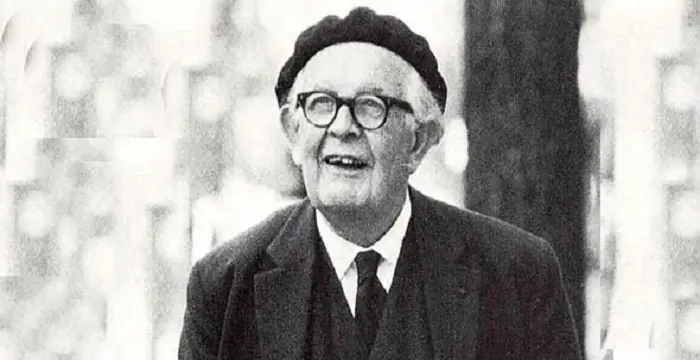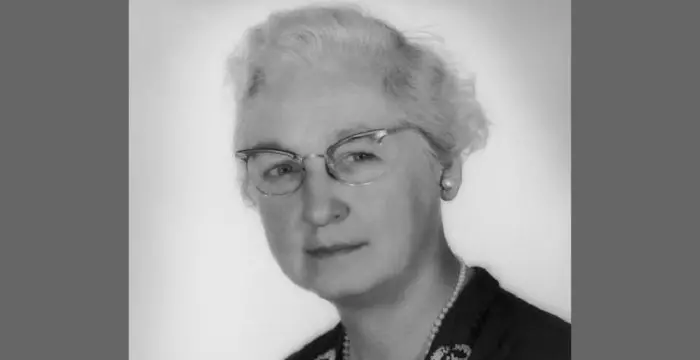
Virginia Apgar - Physicians, Family and Life
Virginia Apgar's Personal Details
Known for inventing a novel newborn scoring system, Virginia Apgar was a reputed Physician
| Information | Detail |
|---|---|
| Birthday | June 7, 1909 |
| Died on | August 7, 1974 |
| Nationality | American |
| Famous | Columbia University, Physicians, Anesthesiologist, Physicians |
| City/State | New Jersey |
| Spouses | Sylvie Leflet |
| Siblings | Julian Birley |
| Universities |
|
| Notable Alumnis |
|
| Birth Place | Westfield |
| Gender | Female |
| Sun Sign | Gemini |
| Born in | Westfield |
| Famous as | Physician and Anesthesiologist |
| Died at Age | 65 |
// Famous Physicians
Maria Montessori
Maria Montessori was a physician and educator who developed the approach of Montessori education. This biography of Maria Montessori provides detailed information about her childhood, life, achievements, works & timeline.
Severo Ochoa
Severo Ochoa was a Spanish physician and biochemist who won the 1959 Nobel Prize in Physiology or Medicine. Check out this biography to know about his childhood, life, achievements, works & timeline.
Charles R. Drew
Charles R. Drew was an American physician and surgeon who introduced the concept of ‘blood bank’. This biography profiles his childhood, life, works, career, achievements and timeline.
Virginia Apgar's photo
Who is Virginia Apgar?
Virginia Apgar was a noted obstetrical anaesthesiologist from America, who is best known for her invention of ‘Apgar Score’ which is a standard and simple method to assess the viability of newborns immediately after birth. This method is followed by doctors to evaluate the health of newborns even today. She was also the first woman to hold the rank of a full professor at Columbia University College of Physicians and Surgeons for anaesthesiology. She was an expert in teratology which was then a new field in the study of birth defects in babies. Her hard work in the field of medicine resulted in the formation of certain medical measures for mothers and newborns that prevented infant mortality to a great extent. As a child she had an early interest in science and medicine which she mostly inherited from her father. She decided to become a physician during her high school years as she was exceptionally good in science. As a student she also possessed endless energy as she participated in seven different sports teams, contributed to school dramatics, worked in the college newspaper and played the violin too. Her incessant enthusiasm to learn new things led her to make a mark for herself in medical history.
Childhood & Early Life
Virginia Apgar was born in Westfield, New Jersey on June 7, 1909 and she was the third and youngest child of Charles Emory Apgar and Helen May Apgar.
Her father was a businessman but also had a laboratory in his basement which he used for experimenting with radio waves and electricity. This could be the reason why she developed an early interest in science.
She learnt music from her family members and actively played orchestra in Westfield High School and participated in school athletics. She graduated from school in 1925.
Upon deciding on becoming a doctor, she joined the Mount Holyoke College and graduated in 1929. She supported herself throughout graduation by working as a librarian and waitress and a few other jobs.
She had to borrow money and got herself into a financial debt to continue her studies after getting into Columbia University College of Physicians and Surgeons (CUCPS) in September 1929. At that time, United States was going to be hit for a decade of economic crisis because of the Great Depression that continued from 1929 till 1939.
Career
Virginia Apgar received her medical degree in 1933 and stood fourth in her class. Because of the financial debt, she had to consider alternative means to support herself while going forward with her medical career. As the medical profession was male dominated at that time and considering that even male doctors had a tough time finding jobs, she considered anesthesiology as a safe field. Anaesthesiology is the process of numbing an area of the body, or making patients lose consciousness before a surgery. It is administered by anaesthesiologists.
At that time, nurses mainly administered anesthesia but doctors had also started doing it. The then-CUCPS’s surgery chairman Allen Whipple thought Virginia Apgar had the potential to take up anaesthesiology and advised for it. She completed her certification in 1937.
By choosing anesthesia, her job was secured and she was chosen as the director of the newly formed division of anesthesia in 1938 at Columbia University. However, it was rather challenging as in those days anaesthesiologists were treated inferior to normal doctors. She expanded the department with more doctors and secured a funding in 1941 for the department.
After a few years, a new department for training and research was formed for anesthesia but another male doctor was chosen as the head of the department in 1949 and Virginia Apgar was appointed a full professor in the university, making her the first woman to hold such a prestigious position. She held the position till 1959.
Meanwhile in 1953, she invented the renowned ‘Apgar score’ that assesses newborns so that they can be treated immediately after birth in case any fatal health abnormalities are found. The infants are evaluated at one minute and again at five minute intervals after delivery and scored accordingly. On finding a lesser score, the infants are re-evaluated. This process minimises the chances of infant death. The infant’s Appearance (colour of skin), Pulse, Grimace, Activity (muscle tone) and Respiration are evaluated which helps to decide if the child needs special medical attention.
After quitting Columbia University in 1959, she attained a degree in Master of Public Health from Johns Hopkins University. She was actively associated with the March of Dimes research program from 1959 and became vice president and director of basic research at The National Foundation-March of Dimes in 1967. During her time there, her main focus was to prevent birth defects. She also became the first American doctor to specialise in birth defects.
For public awareness, she wrote various articles and gave lectures on birth defects. Another great contribution during her medical career was that she brought to notice the dangers of premature births.
When rubella broke out between 1964 and1965, she strongly advocated for rubella vaccination so that it doesn’t spread from mothers to their infants. Rubella is known to cause birth defects in infants if the mother gets the infection during the gestational period.
She travelled a lot in her job to spread awareness among people about birth defects and stressed on the need for extensive research in this field.
She became the director at National Foundation for Basic Medical Research in 1967 and held the post till 1968 and also served as the Medical Affairs vice president from 1971 to 1974.
She co-wrote a book with Joan Beck called ‘Is My Baby All Right? ’ in 1972 which was another attempt from her side to spread awareness about birth defects and the wellness of infants and mothers.
She worked as a clinical professor from 1971-1974 at Cornell University for paediatrics where she taught teratology. She also taught medical genetics at Johns Hopkins School of Public Health.
Major Works
Virginia Apgar was the founder of Apgar Scoring System for newborns that evaluates each infant’s breathing, heart rate, colour, muscle tone and reflexes to find out if it needs special medical attention.
She brought to mainstream notice the significance of birth defects and spent her life writing scientific articles and educating people about the seriousness of birth defects and premature births. The book ‘Is My Baby All Right?’ which she co-authored with Joan Beck was one of her major contributions to medical science.
Awards & Achievements
Women's Medical College of Pennsylvania presented her with an honorary doctorate in 1964.
Mount Holyoke College presented her with an honorary doctorate in 1965.
American Society of Anesthesiologists gave her the Distinguished Service Award in 1966. The same year she also received the American Women's Medical Association’s Elizabeth Blackwell Award.
Columbia University College of Physicians and Surgeons gave her the Alumni Gold Medal for Distinguished Achievement in 1973. She also received the Ralph M. Waters Award from American Society of Anesthesiologists and the Woman of the Year in Science from Ladies Home Journal that year.
Personal Life & Legacy
Virginia Apgar never married and didn’t have any children.
She spent her free time playing and making musical instruments which included violin, viola, and cello.
Apart from that she also had interests in golf, fishing, photography and gardening. She died at the age of 65 in New York on 7 August, 1974. She was suffering from liver cirrhosis.
Trivia
Virginia Apgar held a prestigious position in a male dominated society and earned equal respect at par with men. But she never participated in the women’s movement though she was unhappy with gender inequality that she faced throughout her career. According to her, "women are liberated from the time they leave the womb".
// Famous Columbia University
Helen Morris
Helen Morris is a former book editor, TV producer and the wife of Academy Award winning director Martin Scorsese. Check out this biography to know about her birthday, childhood, family life, achievements and fun facts about her.
Simon Kuznets
Simon Kuznets was a noted Russian-American economist, statistician, demographer, and economic historian. Check out this biography to know about his childhood, family life, achievements and other facts related to his life.
Anna Paquin
Anna Paquin is a Kiwi film, theatre and television actress known for her roles in movies like ‘The Piano’, ‘Fly Away Home’, and ‘X-Men. This biography provides detailed information about her childhood, life, achievements, works & timeline.
Virginia Apgar biography timelines
- // 7th Jun 1909Virginia Apgar was born in Westfield, New Jersey on June 7, 1909 and she was the third and youngest child of Charles Emory Apgar and Helen May Apgar.
- // 1925She learnt music from her family members and actively played orchestra in Westfield High School and participated in school athletics. She graduated from school in 1925.
- // 1929Upon deciding on becoming a doctor, she joined the Mount Holyoke College and graduated in 1929. She supported herself throughout graduation by working as a librarian and waitress and a few other jobs.
- // 1929 To 1939She had to borrow money and got herself into a financial debt to continue her studies after getting into Columbia University College of Physicians and Surgeons (CUCPS) in September 1929. At that time, United States was going to be hit for a decade of economic crisis because of the Great Depression that continued from 1929 till 1939.
- // 1933Virginia Apgar received her medical degree in 1933 and stood fourth in her class. Because of the financial debt, she had to consider alternative means to support herself while going forward with her medical career. As the medical profession was male dominated at that time and considering that even male doctors had a tough time finding jobs, she considered anesthesiology as a safe field. Anaesthesiology is the process of numbing an area of the body, or making patients lose consciousness before a surgery. It is administered by anaesthesiologists.
- // 1938By choosing anesthesia, her job was secured and she was chosen as the director of the newly formed division of anesthesia in 1938 at Columbia University. However, it was rather challenging as in those days anaesthesiologists were treated inferior to normal doctors. She expanded the department with more doctors and secured a funding in 1941 for the department.
- // 1953Meanwhile in 1953, she invented the renowned ‘Apgar score’ that assesses newborns so that they can be treated immediately after birth in case any fatal health abnormalities are found. The infants are evaluated at one minute and again at five minute intervals after delivery and scored accordingly. On finding a lesser score, the infants are re-evaluated. This process minimises the chances of infant death. The infant’s Appearance (colour of skin), Pulse, Grimace, Activity (muscle tone) and Respiration are evaluated which helps to decide if the child needs special medical attention.
- // 1959After a few years, a new department for training and research was formed for anesthesia but another male doctor was chosen as the head of the department in 1949 and Virginia Apgar was appointed a full professor in the university, making her the first woman to hold such a prestigious position. She held the position till 1959.
- // 1959 To 1967After quitting Columbia University in 1959, she attained a degree in Master of Public Health from Johns Hopkins University. She was actively associated with the March of Dimes research program from 1959 and became vice president and director of basic research at The National Foundation-March of Dimes in 1967. During her time there, her main focus was to prevent birth defects. She also became the first American doctor to specialise in birth defects.
- // 1964When rubella broke out between 1964 and1965, she strongly advocated for rubella vaccination so that it doesn’t spread from mothers to their infants. Rubella is known to cause birth defects in infants if the mother gets the infection during the gestational period.
- // 1964Women's Medical College of Pennsylvania presented her with an honorary doctorate in 1964.
- // 1965Mount Holyoke College presented her with an honorary doctorate in 1965.
- // 1966American Society of Anesthesiologists gave her the Distinguished Service Award in 1966. The same year she also received the American Women's Medical Association’s Elizabeth Blackwell Award.
- // 1968She became the director at National Foundation for Basic Medical Research in 1967 and held the post till 1968 and also served as the Medical Affairs vice president from 1971 to 1974.
- // 1971She worked as a clinical professor from 1971-1974 at Cornell University for paediatrics where she taught teratology. She also taught medical genetics at Johns Hopkins School of Public Health.
- // 1973Columbia University College of Physicians and Surgeons gave her the Alumni Gold Medal for Distinguished Achievement in 1973. She also received the Ralph M. Waters Award from American Society of Anesthesiologists and the Woman of the Year in Science from Ladies Home Journal that year.
- // 7th Aug 1974Apart from that she also had interests in golf, fishing, photography and gardening. She died at the age of 65 in New York on 7 August, 1974. She was suffering from liver cirrhosis.
// Famous Physicians
Al-Zahrawi
Al-Zahrawi, was an illustrious medieval Arab Muslim physician and surgeon. Check out this biography to know about his childhood, family life, achievements and interesting facts about him.
Jabir Ibn Hayyan
Jabir Ibn Hayyan was a medieval era polymath. Check out this biography to know about his life, works and achievements.
Maria Montessori
Maria Montessori was a physician and educator who developed the approach of Montessori education. This biography of Maria Montessori provides detailed information about her childhood, life, achievements, works & timeline.
Mae Jemison
Mae Carol Jemison is a famous American astronaut who became the first African American astronaut to travel to space. To know more about her childhood, career, profile and timeline read on
Paul Farmer
Paul Farmer is an anthropologist and physician who co-founded the health organization - Partners In Health (PIH). This biography of Paul Farmer provides detailed information about his childhood, life, achievements, works & timeline.
Jean Piaget
Jean Piaget was a psychologist and philosopher known for his theory of cognitive development. This biography of Jean Piaget provides detailed information about his childhood, life, achievements, works & timeline.
Virginia Apgar's FAQ
What is Virginia Apgar birthday?
Virginia Apgar was born at 1909-06-07
When was Virginia Apgar died?
Virginia Apgar was died at 1974-08-07
Where was Virginia Apgar died?
Virginia Apgar was died in New York City
Which age was Virginia Apgar died?
Virginia Apgar was died at age 65
Where is Virginia Apgar's birth place?
Virginia Apgar was born in Westfield
What is Virginia Apgar nationalities?
Virginia Apgar's nationalities is American
Who is Virginia Apgar spouses?
Virginia Apgar's spouses is Sylvie Leflet
Who is Virginia Apgar siblings?
Virginia Apgar's siblings is Julian Birley
What was Virginia Apgar universities?
Virginia Apgar studied at Columbia University, Mount Holyoke College, Johns Hopkins University, University of Wisconsin-Madison, Columbia University
What was Virginia Apgar notable alumnis?
Virginia Apgar's notable alumnis is Columbia University
What is Virginia Apgar's sun sign?
Virginia Apgar is Gemini
How famous is Virginia Apgar?
Virginia Apgar is famouse as Physician and Anesthesiologist
